 (08.24.05) DUTCH artist Roel Meelkop (Staalplaat, Trente Oiseaux, Intransitive) was trained at the Willem de Kooning Academy in Rotterdam. These days most people may not have seen his visual work but will know him through his work as a maker of quality artistic sounds both solo and as a member of the seminal collectives THU20 and Kapotte Muziek, and more currently with Goem where he brought a bit of the sonic funkier side of electronic music to life.
(08.24.05) DUTCH artist Roel Meelkop (Staalplaat, Trente Oiseaux, Intransitive) was trained at the Willem de Kooning Academy in Rotterdam. These days most people may not have seen his visual work but will know him through his work as a maker of quality artistic sounds both solo and as a member of the seminal collectives THU20 and Kapotte Muziek, and more currently with Goem where he brought a bit of the sonic funkier side of electronic music to life.
Igloo :: Such a pleasure to speak with you. I hear that you have some new music about to be released and thought I might ask you a few questions about this and that. But first, how are you doing and where are you right now?
Roel Meelkop :: I am doing very well, thank you. I am right now at the dining table in our house in Rotterdam, where I’ve put my laptop, as ever when I expect to be working for a longer stretch of time.
Igloo :: A man’s heart may belong somewhere nearby the kitchens of the world. I have long noticed your numbering system and subtitles for your releases. Is this some type of code like say that used by artist Jonathan Borofsky?
RM :: Well, not really, but it could be read as such I suppose. The numbers simply refer to the number of tracks on the release and the subtitle is a personal reference to the work. However, I regard all my releases more or less as single pieces of work, even if they consist of many small parts. This system is changing at the moment actually: no more numbers, just a (sub)title for the whole CD.
Igloo :: I see, gives it a little bit more of a personal touch than dubbing anything simply “untitled.” Can you say something special about your collaborators? Anything, really… like what Frans (de Waard) eats when touring on the road, or if Peter Duimelinks is secretly a stamp collector. And maybe something significant about how these or other influential artists have made their mark on your life and in your work…
RM :: Hhmm, let’s see. Both Frans and Peter are gourmets and therefore a pleasure to be on tour with. We always seem to spend most of our meager earnings as fast as possible on the best local food and drink available. And it may not come as a surprise to anyone that both have an absolutely stunning knowledge of an extremely wide variety of music and I do not. Other than that, both have had a significant influence on my work, simply by exposing me to works I did not know before or dealing with sound in ways I had not thought of before. It must also be said that both have a different network, which broadens my access to the worldwide group of people involved in our kind of music. Besides my two collaborators I must mention Jos Smolders, who has had a major influence on my musical development as well. Reading a lot of books by John Cage has cleared my mind substantially, whereas listening to electronic music of all kinds and genres has left a lasting imprint on my mind.
Igloo :: Do you have a few favorite pop records of all time (any genre actually)?
RM :: Ha, this is a question that will have to get a different answer each time. Pop music is as fluid as my opinion, or is it the other way around? Anyway, at the moment the Beatles are back on top with The Magical Mystery Tour, second is Kraftwerk with their live best of album Minumum Maximum (just saw them live) and the third one simply doesn’t seem to spring to mind… (but let’s say it is definitely a Factory record).
Igloo :: All classic, very nice. It’s always amazing to hear that the Beatles are still at it in people’s cognitive settings. So, you have traveled quite extensively to present your music to the people. Can you talk about a few of the extreme highlights in these travels… has there been something quite strange/unexpected while either performing or in your travels?
RM :: Traveling comes with unexpected things. Most remarkable I guess was the time we were flying to Montreal to perform at the Mutek festival in 2001. We had just boarded the plane and were waiting for departure as we heard some kind of strange noise. I believe it was Frans who joked that the engine didn’t start. We laughed this away of course, but lift off seemed to take forever. Later the captain came on and told us there were problems with one of the engines and that the ground crew was trying to fix it. This didn’t happen and we were put on another (direct) flight.
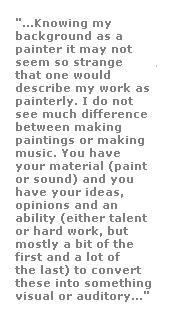
Then there is the story of THU20 going to Bordeaux (France) in an old battered army Volkswagen van. We were accompanied by Frans and Jupiter X. Larssen of the Haters. This happened in 1989. When still in the Netherlands, picking up Frans, the side slide door almost fell out and couldn’t be used anymore, so everybody had to get in through the front door on the right. One stop further in the Netherlands the electric starter gave up, so we had to push the van to start it. This created the pretty comical situation that all but the driver had to push the van until it started, then the right door was opened and everybody filed into the car by climbing over the front seat. Needless to say, I did a lot of driving. By the way, top speed was 90 kilometers an hour, so it took us about 20 hours to get to Bordeaux.
Of course we have done some performances that were interrupted either by the audience or the owners of the clubs we played in. However the strangest one was a Kapotte Muziek concert that we played at Rotterdam City Hall. During our performance (which was pretty loud and noisy) an elderly women stepped up to me and demanded to know when we were thinking of starting our performance. She couldn’t handle the noise she was hearing now. I asked her if she didn’t see we were right in the middle of it and she reacted with complete astonishment and started to make a fuss. Then she was hoarded out by concerned bystanders. Later we were told that she was not completely sober anymore.
Igloo :: (cackling) You’ll have to excuse me while I re-compose myself here. Phew, pretty funny, albeit odd goings-on. Am I correct in thinking that you have been involved in the making of a film?
RM :: I once did a sound track for a short film by Alessandro Aiello from Sicily, together with Peter. I also created the multimedia installation Per-Sona during the exhibition Murmur, which is a part of the Rotterdam Film Festival every year (with a different title though). I also organized a concert series during the exhibition -sta.tic of the Film Festival and in that same year I composed 8 (GHOST TRACKS), to be played before and after film screenings, but no, I have never made an actual film… And for the time being I don’t plan to, it’s a completely different way of working that I do not have the courage to get involved with.
Igloo :: I loved your release (ONKYO OK) for CMR and respect Richard (Francis) for all he does to both make incredible sound-art and for his production of things of striking beauty. How did this work differentiate, for you, from the Goem project since you were essentially working with the same collaborators?
RM :: Let me first say that I agree completely with your comments about Richard Francis. Then I have to explain that (ONKYO OK) is a solo release by me, not by Goem. The collaborators were not involved in the actual process of creating the tracks. Beside myself, they made some of the original sound recordings in Japan. I used these recordings to compose the pieces for (ONKYO OK). I chose to not put my name on the cover to see if people would still recognize it as a work by me. From your question I can deduce that this did not work very well, so I think I will not do it again. As an aside: (ONKYO OK) is the first album that I produced, based entirely on field recordings.
Igloo :: I brought Richard to Oregon to play live a few years back, just a lovely man to work with. I am interested in your work outside of the compositions and sound work. What visual work have you made after your studies at Willem de Kooning Academy and are there any helpful sources to view some of your 2/3D efforts?
RM :: I got my bachelors degree in sculpture, but I graduated with 2D work. The sculpture teachers were pretty broadminded. I then focused on painting for the next five years, with some degree of development, until I decided it was time to dig into theory again for a bit (most of the work I produced in that period has now been lost or destroyed). That was when I decided to take up a masters course in autonomous art and art theory at the same academy. When I finished this course I decided to stop painting and focus on sound. And I have been doing that since then. I have done a fair number of sound installations and soundtracks for contemporary dance theatre beside my studio work.
There is not really a good way yet to view these works or parts of them. But I am working on a website that should be online in a couple of months. It is intended to give an insight in my different activities and should provide pictures and sound as well.
Igloo :: I’ll certainly look forward to seeing the site. Speaking of your more visual side, can you talk about the (FAVORITES) release on V2_Archief. I have never been able to locate it, and know it has been described by The Wire as a “painterly approach to editing and juxtaposition”. This fascinates me all the more knowing your background. I am always interested when an artist crosses and/or disregards the paved path of any genre, especially when it becomes something more A/V-based…
RM :: I know for a fact that the release (an LP with a CD) is still available from V2_Archief. (FAVORITES) is still one of my favorite releases. It is intended as a homage to all the artists that have in some way contributed to my work because I love their work so much. I remixed 18 tracks from 18 artists to create this work. The term remix is actually hardly appropriate; it should be interpreted in an almost destructive way. I used samples from the other artists’ work to fit my specific needs and desires, so I reworked all of them quite heavily. Knowing my background as a painter it may not seem so strange that one would describe my work as painterly. I do not see much difference between making paintings or making music. You have your material (paint or sound) and you have your ideas, opinions and an ability (either talent or hard work, but mostly a bit of the first and a lot of the last) to convert these into something visual or auditory. I know I make it sound simple, but I do it on purpose: I am convinced that anyone with enough interest in the subject is able to do it just as well as anyone else. The good thing about my background is that I was able to take the liberties I had gained at the academy even more so in the years after with me in my approach to sound.
Igloo :: Now that we have touched on the present somewhat I would like to dip into your deep, dark past a bit. THU20 continues to fascinate listeners more than a handful of years hence. Has this project been laid to its final resting place? How did it all get started and are you still in contact or working with graduates like Jos Smolders and Jac van Bussel?
RM :: THU20 has not yet been laid to its final resting place, but has been inactive for a couple of years now. A new project was cancelled not so long ago, due to financial restrictions. THU20 will continue to exist on a project basis, but of course the chances of actually doing something will become smaller (we are doing a concert in The Netherlands in October though). THU20 started as an offspin of a band called Club Rialto (Jac van Bussel, Guido Doesborg and Roel Meelkop). All of us were recording tapes at home as well and when Jac and Guido made some recordings and released them they called themselves THU20. At a certain point Club Rialto was booked for a concert and a week before we had to play I found out I couldn’t make it after all. Jac and Guido then decided to do a live THU20 concert. Jos (who played slides at Club Rialto concerts) joined in and when I heard the recordings afterwards I was blown away and said we should go on in this direction. All agreed and THU20 was born. Soon after that Peter (who was a good friend of Jac’s and came to all our concerts) asked if he could join and that was the completion of THU20 for a long time.
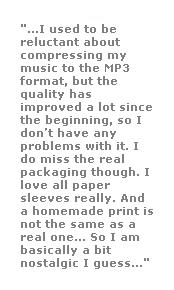
All of us are still in contact on an irregular basis (mainly because we live in different cities), but there are not many collaborations going on between individual members (although Jos and I spoke vaguely about doing something in the future again).
Igloo :: I’ve actually quite enjoyed some of Jos’ more recent solo work, very heady and smooth all at once. Do you have any comments on distributing your music online through exclusively digital, non-product means?
RM :: I used to be reluctant about compressing my music to the MP3 format, but the quality has improved a lot since the beginning, so I don’t have any problems with it. I do miss the real packaging though. I love all paper sleeves really. And a homemade print is not the same as a real one… So I am basically a bit nostalgic I guess.
Igloo :: Nostalgia aside, the physical, artistic work does lose something in translation no matter what it seems. One of the things I have always appreciated about you, personally, is that you are somewhat of a “faceless” performer. Letting the sound stand for itself seems the point, but I was wondering what you might have to say about the current trend of electronic artists becoming pop poster children. Enigmatic and detached, reserved or just no real need to put your mug on the translucence of a lock groove or even in the sleeves of the disc art? You can plead the fifth on this one if you like.
RM :: I think that the work is more important than the artist. I am not against showing my face somewhere, but it is not required to enhance the work I do, so why put it on the cover of a release? But sometimes there are exceptions; one of them is a collaborative work between Lethe and Kapotte Muziek, to be released by Intransitive Recordings. Instead of liner notes we decided to use pictures of our recordings together to tell the story of the music, because it adds important or interesting information to the disc. So you will be seeing my face on a release after all!
Igloo :: (smile) You are working with my friend Howard Stelzer’s Intransitive Recordings again. How did that all come about and how did you two originally connect the dots?
RM :: As I mentioned earlier, both Frans and Peter have played an important role in my work as a sound artist. Aside from releasing my music on their own labels (Korm Plastics and V2_Archief), they have put me in contact with others in the scene. In this case it was Frans who directed me to Howard Stelzer in 1998. Intransitive Recordings had then just released a studio CD by Kapotte Muziek and I was looking for a label to release my 6(MAILCOP RULES). I got in touch with Howard and he was interested so that’s how we got started. We have been in touch ever since. Howard helped a lot in organizing a tour in the USA in 2002 for Kapotte Muziek, Goem and our solo projects, so aside of releasing music he is also an avid promoter of the same.
Igloo :: Could you tell me – are there any current projects you have coming up or that are just recently released?
RM :: Aside from the 5(AMBIENCES) that was just released on Intransitive Recordings, there is also a CD release on the new Austrian label nonVisualobjects (founded by Heribert Friedl and Raphael Moser). It’s called Momentum and features adaptations of multi channel sound
installations that I realized in the last eight years. Soon a mini CD-r should be released on Jason Talbot’s label Kissy Records and I
have almost finished recordings for a CD on the German label Auf Abwegen of Till Kniola. Some form of collaboration with Peter Duimelinks is being arranged by Dale Lloyd of Seattle’s and/OAR, but that is still in the very early stages. Well, I think that about covers it for now.
Igloo :: That’s a wrap. Any final comments or words of wisdom?
RM :: Let me take this opportunity to thank all the people who have helped in me in whatever way to realize the work that I have done so far. And thank you for the interview.
- Discogs page
- Intransitive







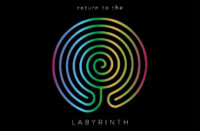

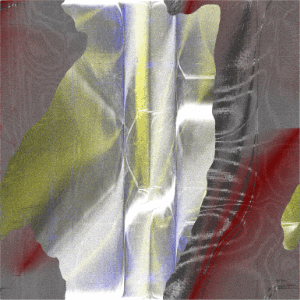

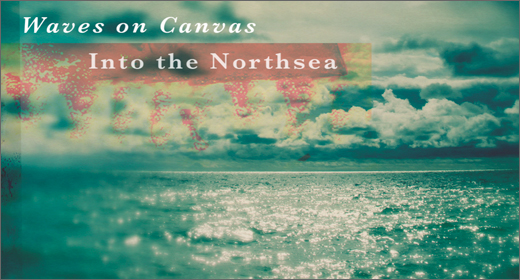








![Luke’s Anger :: Ceiling Walker EP (Love Love) — [concise]](https://igloomag.com/wp/wp-content/uploads/2025/04/lukes-anger-ceiling-walker-vinyl_feat-75x75.jpg)


